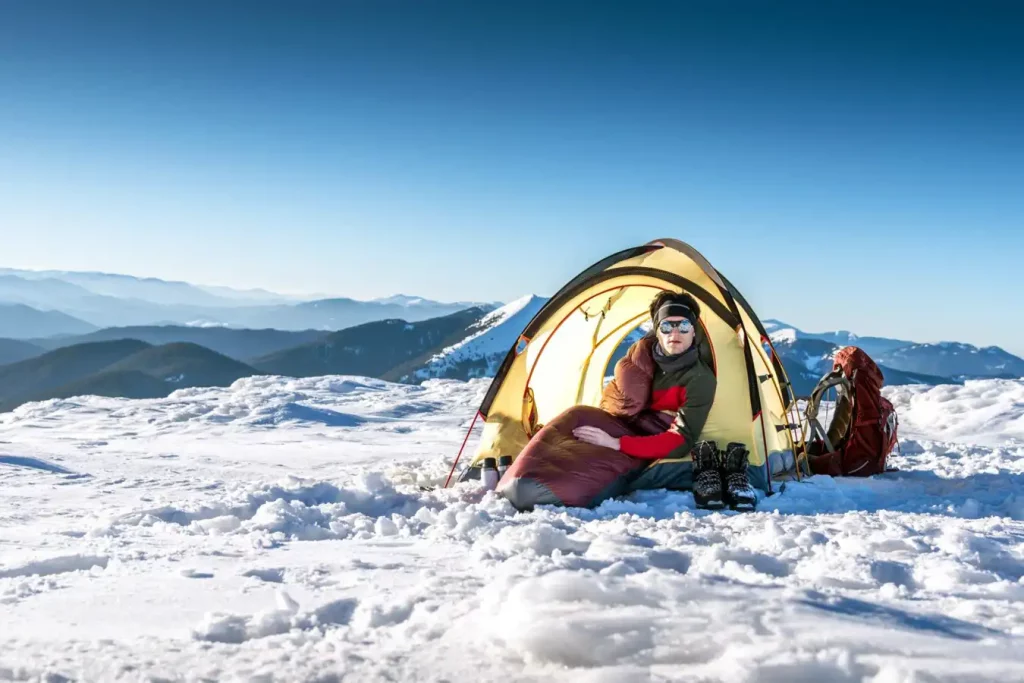I love winter and, ofcourse winter camping in the wild.
Hot weather? In hot weather, we have to be attached to an air conditioner to stay cool. That is robotic weather.
But in winter season! Smell of the grass and campfire. Great right?
Camping in the winter is enjoyable but also risky without planning and preparation.
Yes, I have a better solution for camping in the winter without any hassle. To get better ideas before your next winter camping trip, read and learn what I achieved.
Understanding Winter Camping
As the snowflakes begin to fall and the world wraps itself in a blanket of white, many adventurous souls refuse to trade their tents and backpacks for a cozy spot by the fireplace. Instead, they gear up for an extraordinary experience known as winter camping.
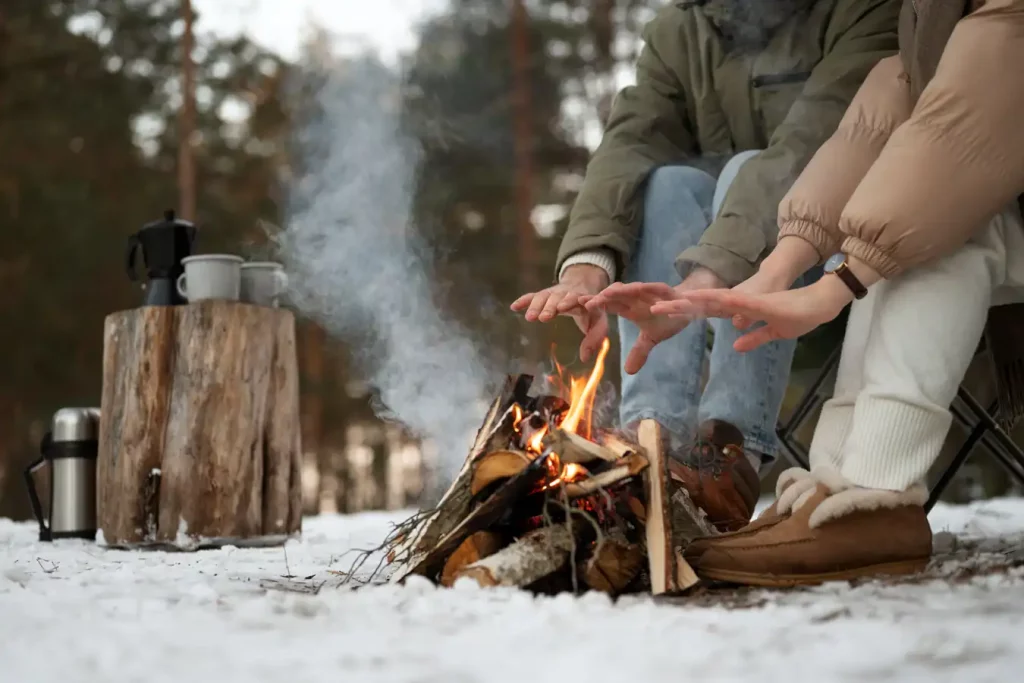
Definition and Importance
Winter camping is essentially what it sounds like – camping during the winter season. However, the simple definition belies the unique beauty and challenges of this activity. This form of camping isn’t just about braving the cold, but also about embracing the serenity of snowy landscapes, exploring trails that are off-limits during other seasons, and developing resilience and resourcefulness in a challenging environment.
Differences from Summer Camping
Winter camping stands in stark contrast to summer camping. In summer, the longer daylight hours allow for more hiking time, trails are easier to navigate, and you can generally get by with lightweight gear. Conversely, winter camping requires specialized equipment like four-season tents, sub-zero sleeping bags, and insulated clothing. The shorter daylight hours also mean you need to plan your day differently, often setting up camp earlier than you would in the summer.
Potential Risks and Challenges
Winter camping is not without its risks. It’s crucial to understand and prepare for the challenges this adventurous pursuit presents.
Harsh Weather Conditions
First and foremost, there’s the cold. It’s not just about feeling uncomfortable; hypothermia is a real risk if you’re not properly prepared. And let’s not forget about snowstorms, which can strike unexpectedly, turning a pleasant camping trip into a survival situation.
Navigating Difficult Terrain
Winter landscapes can be deceptive. Snow and ice can conceal crevices or uneven ground, making navigation more complex. Additionally, frozen bodies of water pose a potential risk if the ice isn’t thick enough to support your weight.
Increased Demands on Gear and Skills
Winter camping requires not just more gear, but also the skills to use it effectively. From setting up a four-season tent in a snowstorm to cooking meals in frigid temperatures, winter camping can be a demanding activity. Plus, it requires knowledge of cold-weather first aid, snow shelter construction, and perhaps even avalanche safety.
Embracing winter camping means understanding these challenges and taking the necessary steps to prepare. It’s about respecting the harsh winter conditions and equipping yourself with the right gear, knowledge, and mindset to not just survive, but to truly enjoy the experience.
Preparation for Winter Camping
If winter camping is your next adventure, it’s essential to remember that the secret ingredient to a successful trip is preparation. From understanding weather conditions to physical readiness and goal-setting, your preparation will define your experience. So let’s explore how you can get ready for your winter camping expedition.
Research and Plan Your Trip
Thorough research and planning are the first steps to a successful winter camping trip. It’s not just about what gear to bring, but also about understanding the environment you’ll be navigating and the challenges you might face.
Understanding Weather Conditions
Your first task is to research the weather conditions of your intended camping destination. Understand the average temperatures, the possibility of snowfall or storms, and the length of daylight hours. This information will not only help you pack appropriate gear, but it will also shape your daily schedule and overall trip plan.
Selecting a Campsite
The second aspect of planning is selecting a suitable campsite. In winter, this means considering factors like shelter from the wind, proximity to a water source (which you might need to melt for drinking), and safety from potential avalanche zones. Also, consider how accessible the site is, especially in case of an emergency.
Physical and Mental Preparation
Winter camping is physically demanding. Hiking through snow, setting up camp in cold weather, and even performing simple tasks like cooking can consume more energy than you expect. Therefore, ensuring you’re physically fit before your trip is vital. Incorporate cardio workouts, strength training, and cold weather acclimation exercises in your routine.
Mental preparation is equally important. The harsh conditions can test your mental endurance, making it necessary to cultivate resilience, patience, and problem-solving skills.
Setting Goals for the Trip
Lastly, define what you want to achieve with this trip. Are you aiming to test your survival skills, looking for a peaceful getaway, or maybe wanting to capture some stunning winter photography? Setting clear goals will help you tailor your preparation and create a meaningful and enjoyable experience.
So, whether it’s your first winter camping expedition or you’re an experienced camper looking to hone your skills, remember that your journey starts long before you step foot in the snow. With comprehensive preparation, you can ensure that your winter camping trip is rewarding, safe, and an unforgettable adventure.
Essential Gear for Winter Camping
Just as a carpenter relies on their tools, a winter camper depends on their gear. The right equipment can not only make your winter camping trip more comfortable, but it can also potentially save your life in extreme conditions. Here’s a list of essential gear that you should consider for your next winter camping expedition.
A hot tent is ideal for winter camp
An ordinary tent won’t cut it in winter. The tent needs to shield you from the biting cold, strong winds, and heavy snow. Here’s where a hot tent comes into play. It’s designed for harsh winter conditions, with durable materials, sturdy structures, and most importantly, an integrated stove system.
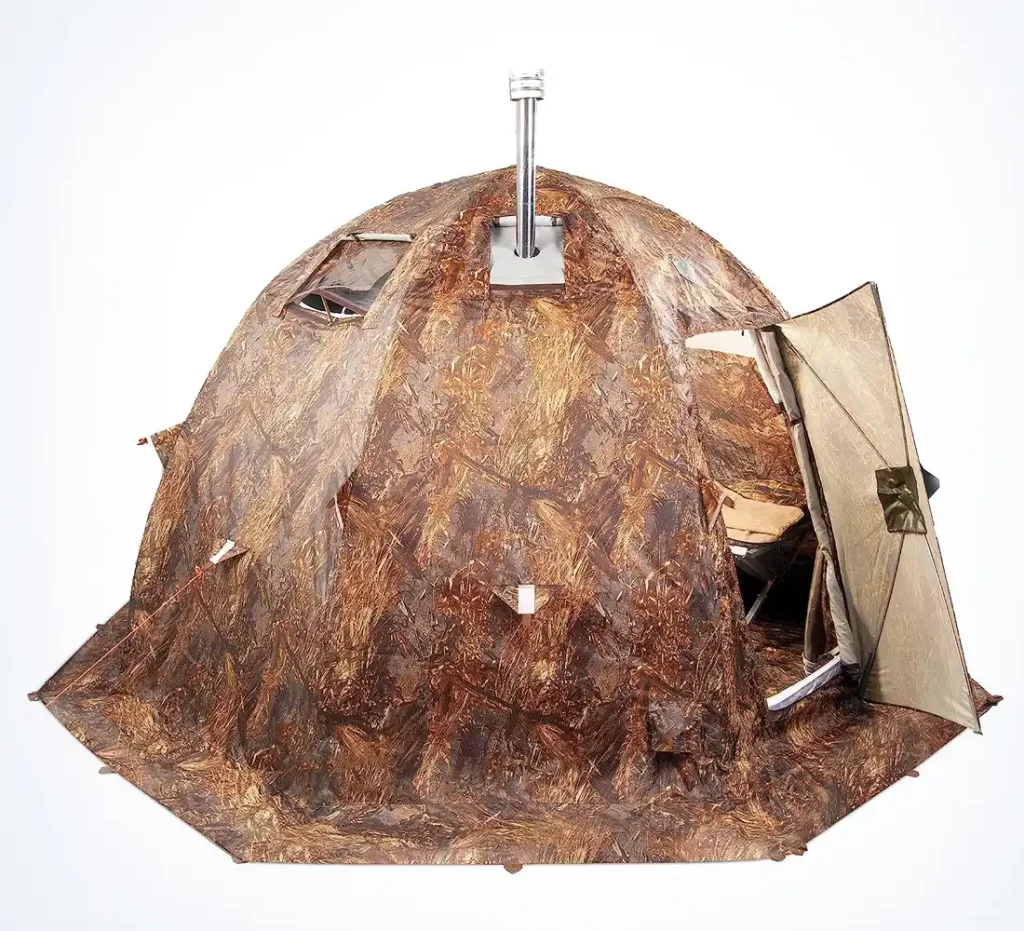
This stove not only offers a warm refuge after a day in the snow but also allows cooking within the tent. When considering a hot tent, think about factors like size, weight, and ease of setup, keeping in mind the unique demands of your winter expedition.
Backpack
A winter camping backpack is much more than a container for your gear; it’s an essential part of your survival strategy. It needs to accommodate more equipment compared to summer camping – extra clothing, heavier food, specific winter gear.
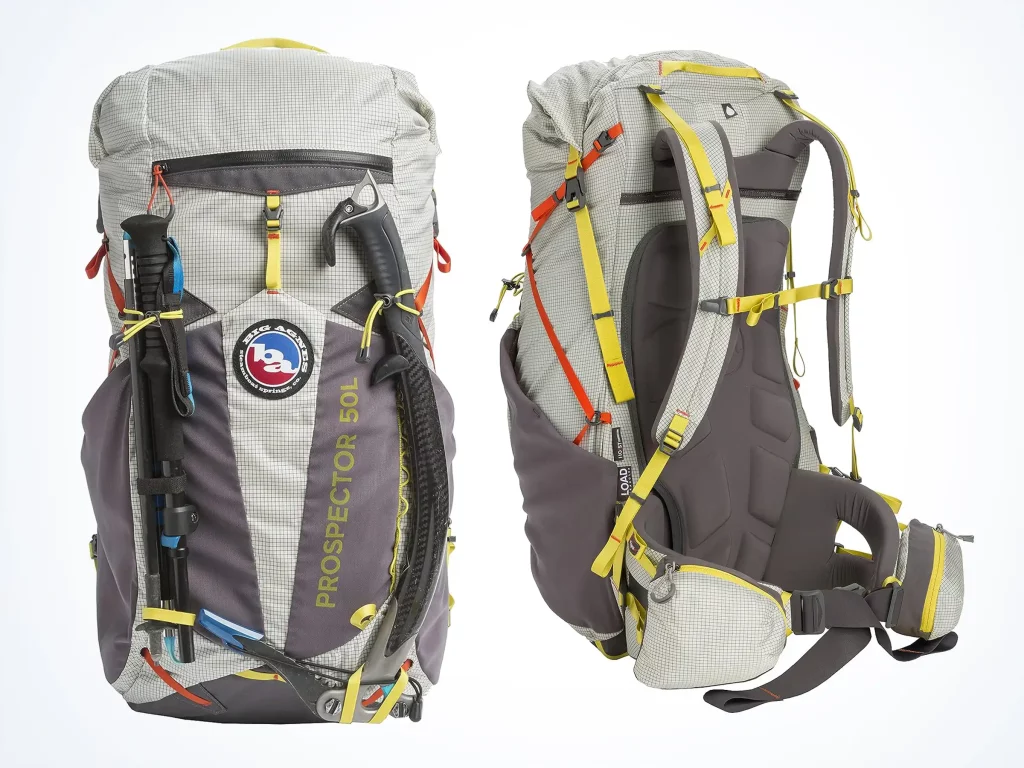
It’s ideal to have a backpack with a capacity of at least 50-80 liters for winter camping. Opt for a backpack with sturdy construction, waterproofing, good load distribution, and comfortable straps. A well-organized backpack with multiple compartments makes accessing your gear easy, even when wearing gloves.
Sleeping Bag
Your sleeping bag is your primary defense against the freezing winter night. A good winter sleeping bag is rated for temperatures well below the expected low to provide a buffer for unexpected cold snaps.
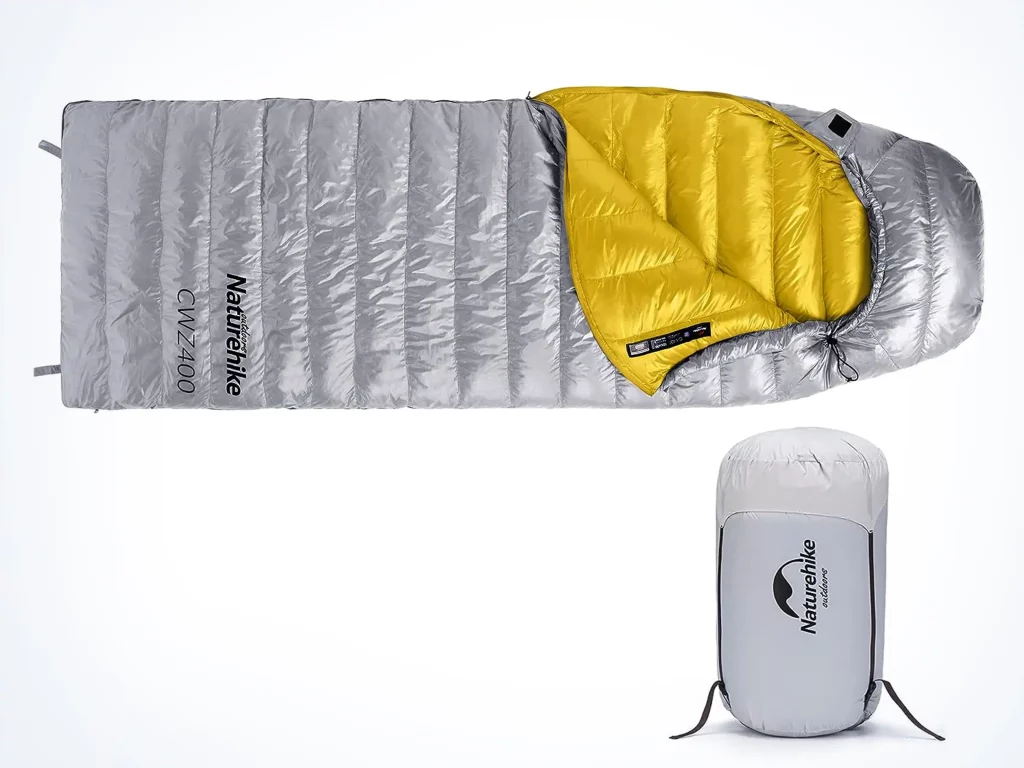
When choosing a sleeping bag, consider the insulation type—down offers superior warmth-to-weight ratio but is less effective when wet, whereas synthetic insulation performs better in damp conditions. Also, consider shape—mummy-style bags are more efficient at retaining heat.
Sleeping Pad
A sleeping pad is crucial in winter to insulate your body from the frozen ground, which can sap body heat quickly. It’s not just about comfort—it’s about survival. A good winter camping sleeping pad should have a high R-value, which indicates greater insulating power.
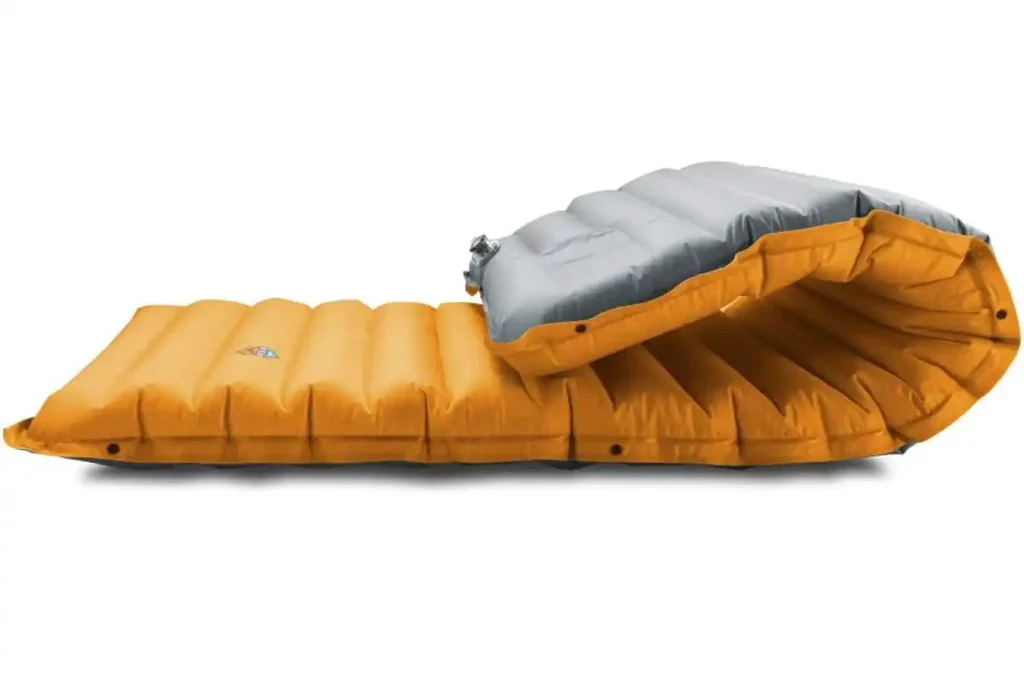
You might want to use two pads: a closed-cell foam pad for its excellent insulating properties and an inflatable pad for added comfort and insulation. Remember, the cold ground can reduce your body temperature faster than the cold air, making your sleeping pad a vital part of your camping gear.
Camping Cookware
Hot meals and drinks become more than just a luxury when you’re winter camping – they’re a lifeline. For this, you’ll need robust camping cookware that can withstand the cold and is easy to handle with gloves on. Ideally, you’d want a lightweight and compact cooking set, which might include a pot, pan, mugs, plates, and utensils.
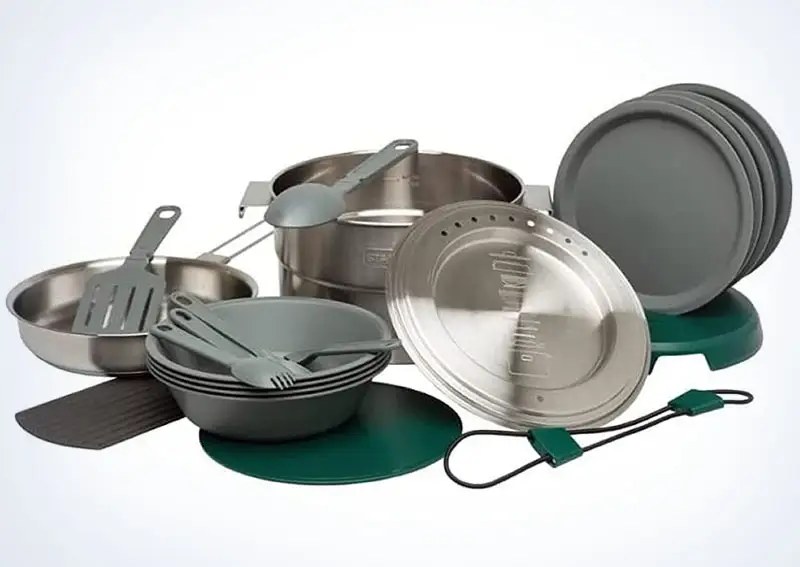
Materials range from aluminum, which is lighter but less durable, to stainless steel, which stands up to rough handling but is heavier. Consider also how your cookware nestles together to save space in your pack.
Camping Stove
A reliable camping stove is crucial for winter camping. It’s your tool for melting snow into drinking water and cooking warm meals. Winter camping stoves need to perform in low temperatures and windy conditions.
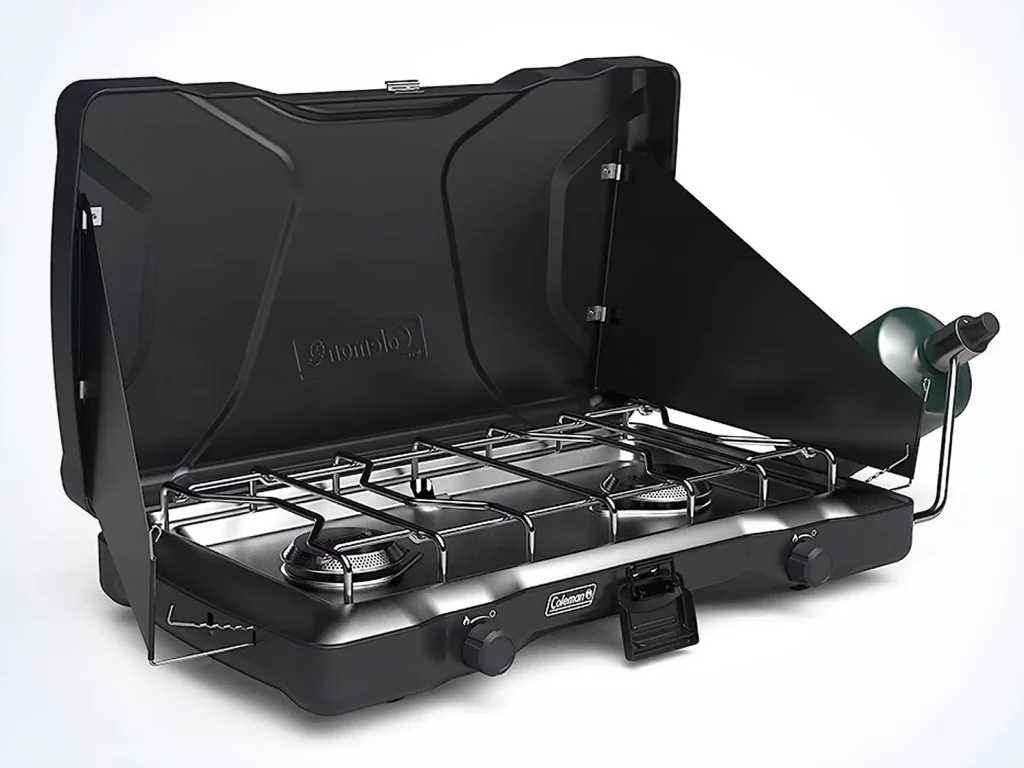
Liquid fuel stoves are often preferred for their high heat output and performance in freezing temperatures. Canister stoves can also be used but require specific strategies in colder weather. Whichever you choose, ensure it’s sturdy, reliable, and that you’re familiar with how to use it.
Camping Axe
A camping axe might seem like a luxury until you need to process firewood or clear a snow-laden campsite. A good camping axe should be compact yet robust, with a sharp blade and comfortable grip.
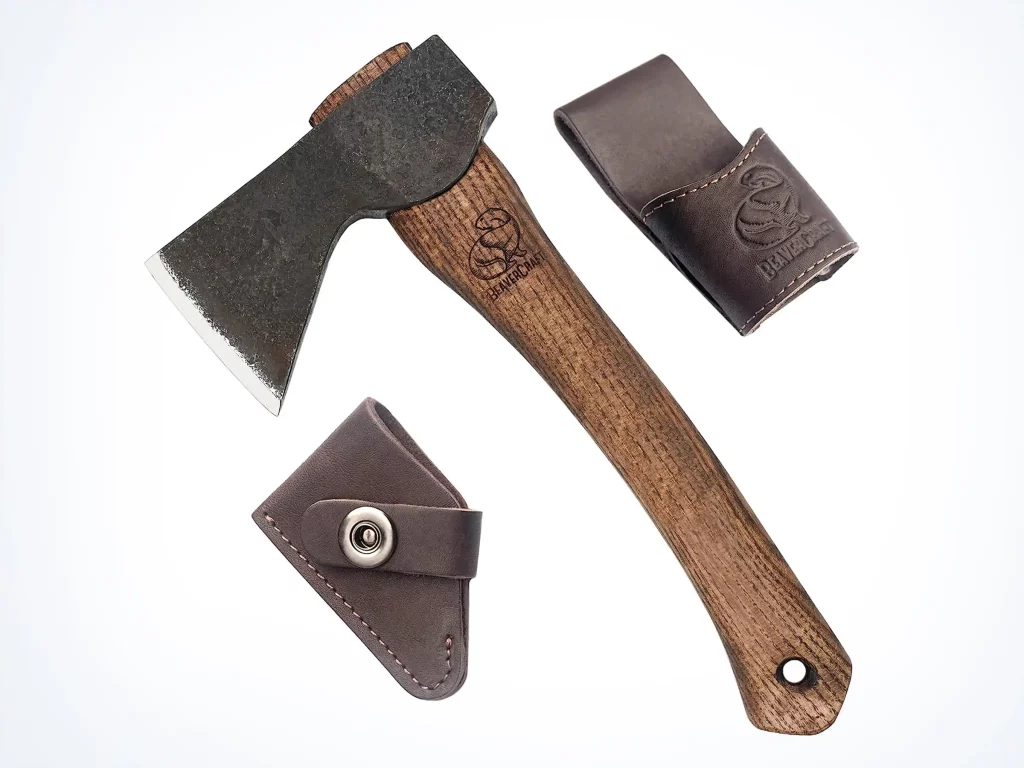
Some axes come with a hammer on the back of the head, useful for pounding tent stakes into frozen ground. But remember, carrying an axe requires knowing how to use it safely. Always ensure it has a sheath when not in use and store it securely.
Snow Shovel
A snow shovel is an invaluable tool when winter camping. From clearing a tent site to excavating a snow shelter, even helping in avalanche rescue, it can literally be a lifesaver. Snow shovels designed for camping are typically lightweight and collapsible for easy packing.
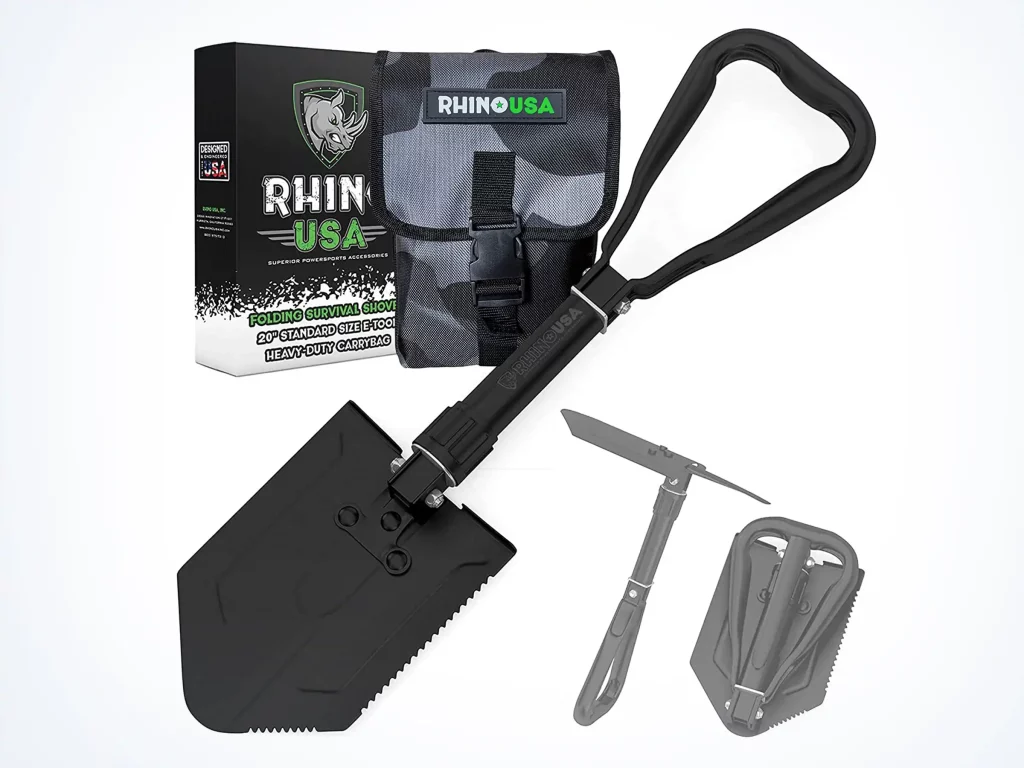
They should have a durable blade and a comfortable handle. Some models feature extendable handles or multiple configurations to tackle different tasks. While it might seem like just another piece of gear to carry, the utility of a snow shovel in winter camping cannot be overstated.
Multi-Tool
When it comes to versatility in the backcountry, it’s hard to beat a good multi-tool. This single device combines various tools – knife, pliers, screwdrivers, can opener, and sometimes more – into one pocket-sized package. LEATHERMAN Signal from Amazon is one of the best multitool out there that include fire-starting ferro rod, 420HC combo blade and emergency whistle.
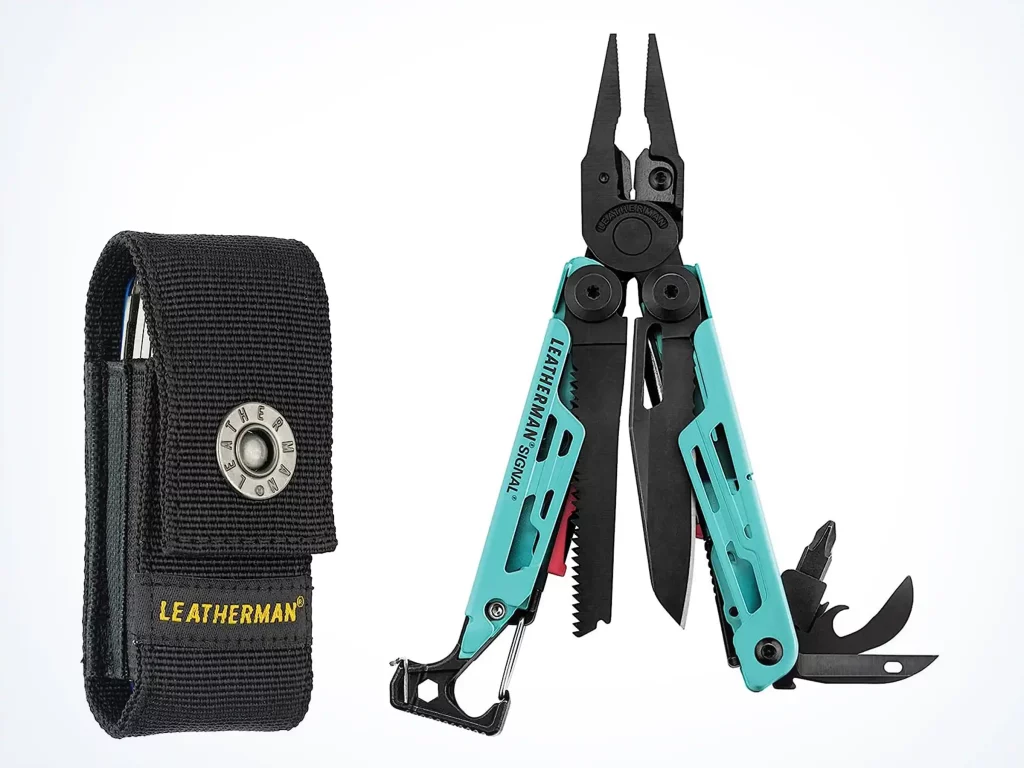
It’s your go-to gadget for small repairs, gear adjustments, food preparation, and countless other tasks. Invest in a sturdy, high-quality model designed for outdoor use, and it will serve you for many camping trips to come. Just remember, a multi-tool is no substitute for a proper tool kit when engaging in activities that require specific gear, like winter sports or climbing.
Flashlight or Headlamp
As daylight hours are drastically shorter in winter, a reliable light source is a must. Flashlights and headlamps each have their benefits. Flashlights tend to be more powerful and can cast light farther, great for spotting distant objects. Headlamps, on the other hand, keep your hands free, which is incredibly helpful for tasks around camp.
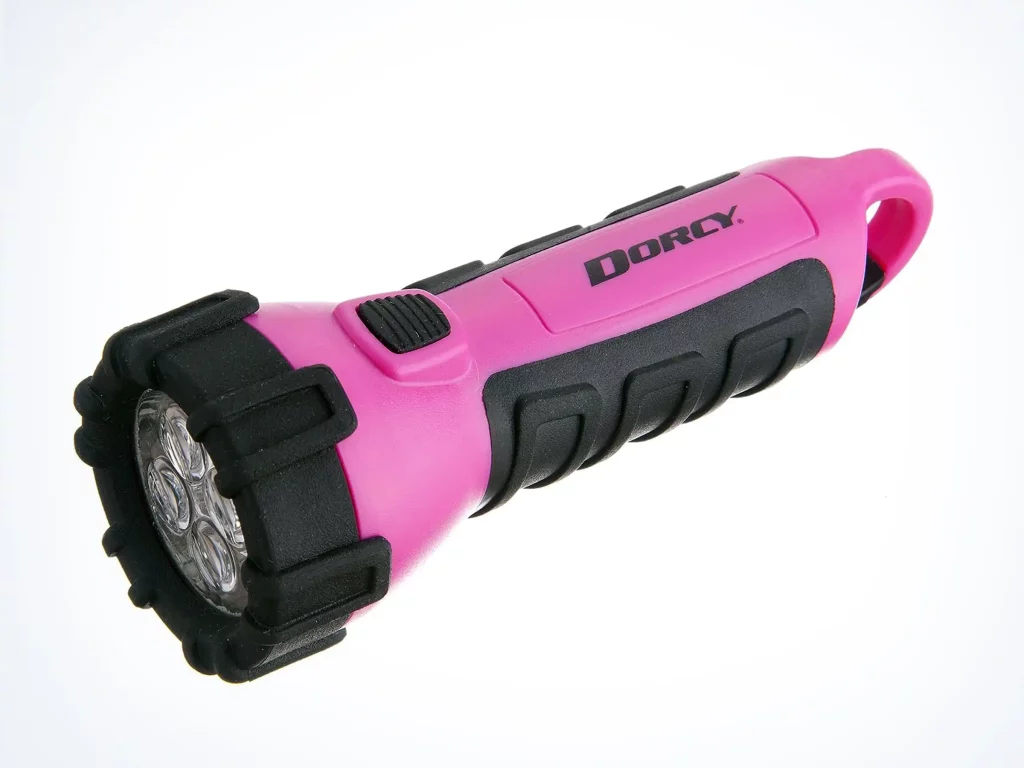
Many outdoor enthusiasts carry both. Whichever you prefer, ensure it’s rugged, water-resistant, and bright. Consider models that offer adjustable brightness levels and a red-light mode, which preserves your night vision. Opt for an LED model as they’re energy-efficient and durable. Remember to pack extra batteries too!
Map and Compass
Electronic devices can fail, but a traditional map and compass won’t run out of batteries. Even if you’re using a GPS device, always carry a physical map and compass as a backup. They can be lifesavers when you’re navigating complex terrain or if visibility is poor.
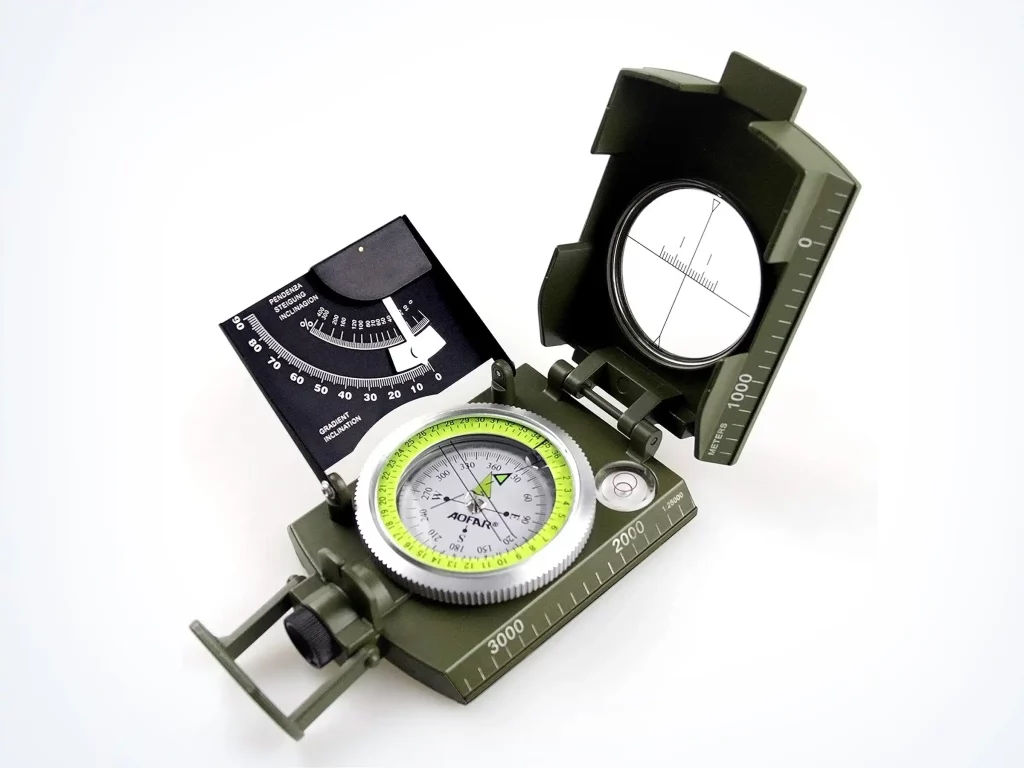
Familiarize yourself with basic orienteering skills before setting out; knowing how to read a topographic map and use a compass correctly can be the difference between a pleasant trip and a dire situation. Plus, understanding the landscape around you can enrich your overall camping experience.
Portable Charger
Speaking of dying batteries, bringing a portable charger can help keep your devices powered up. It can keep your phone, GPS, and other devices running when you’re far from an outlet. When choosing a portable charger, consider the capacity, output (ensure it’s enough to charge your specific devices), weight, and size.
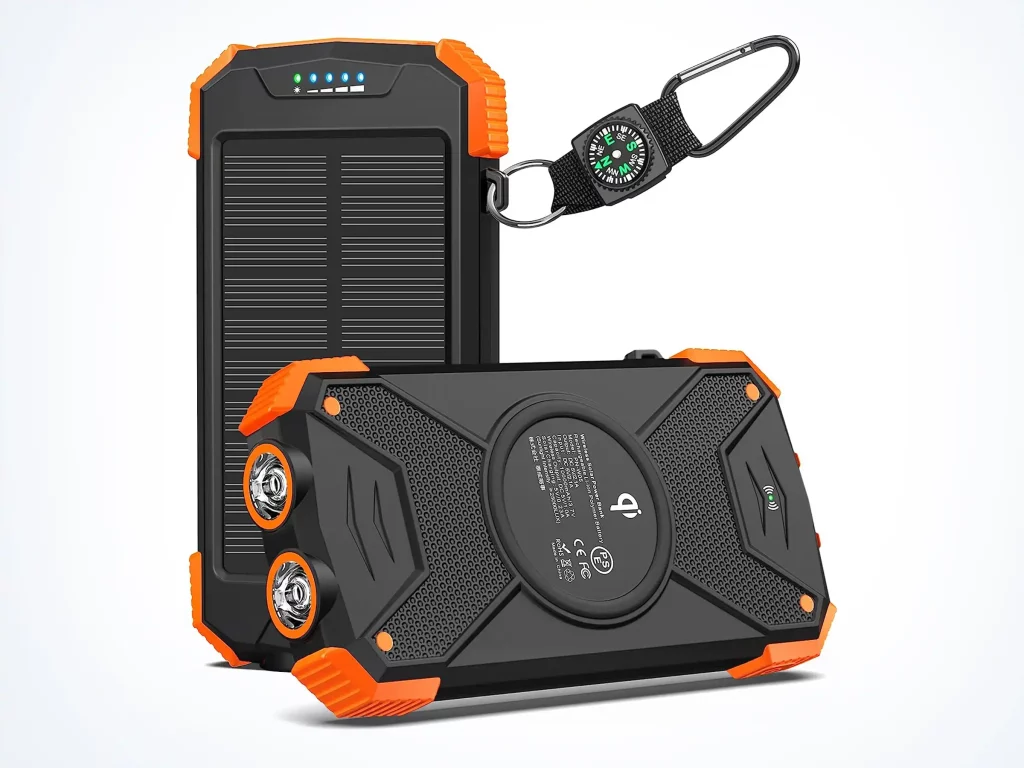
Some models are even solar-powered, providing unlimited power as long as you have sunlight. Keep in mind, batteries can drain faster in cold weather, so keep your portable charger insulated or warm for optimal performance.
Remember, the gear you carry into the wilderness can make the difference between a miserable experience and a memorable adventure. Investing in high-quality, reliable gear is an investment in your safety, comfort, and overall enjoyment of the great outdoors.
What to Wear for Winter Camping
Knowing what to wear for winter camping is half the battle. Dressing appropriately can make the difference between a miserable cold experience and a memorable winter adventure. Understanding the concept of layering and choosing the right footwear are essential for staying warm and comfortable.
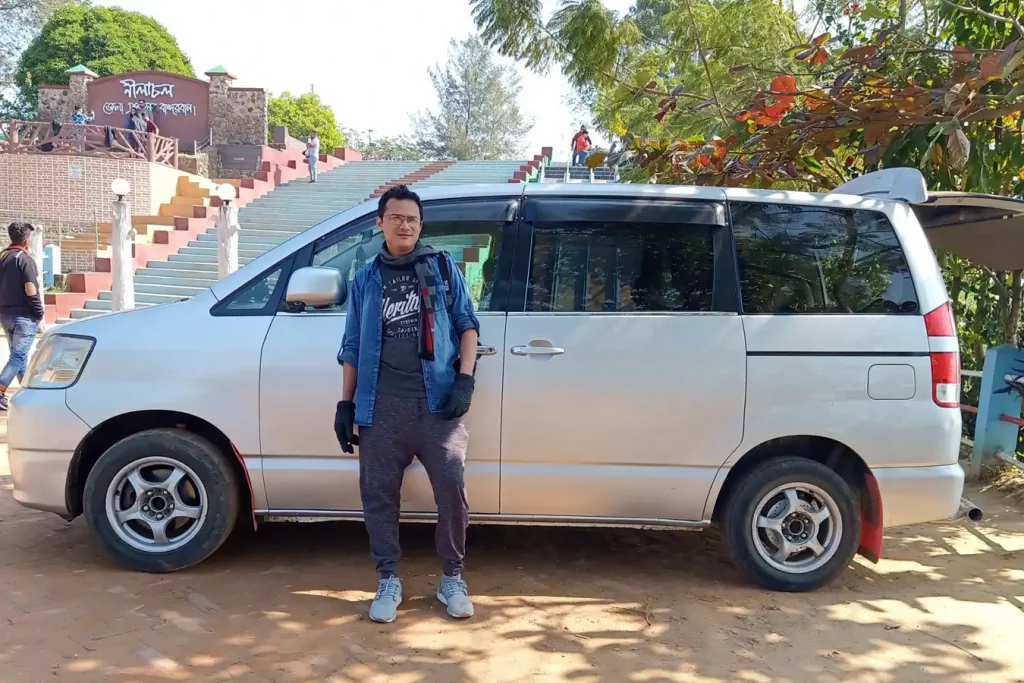
Layering for Warmth and Moisture Management
Layering is the key to staying warm and dry during your winter camping trip. It allows you to adjust your clothing to match your activity level and the weather conditions.
Base Layer
The base layer acts as your second skin. Its primary function is to manage moisture by wicking away sweat from your body, keeping you dry and helping regulate your body temperature. Materials like merino wool or synthetic fabrics are great options. They’re breathable and have excellent moisture-wicking properties. Avoid cotton as it retains moisture and can lead to hypothermia when you sweat.
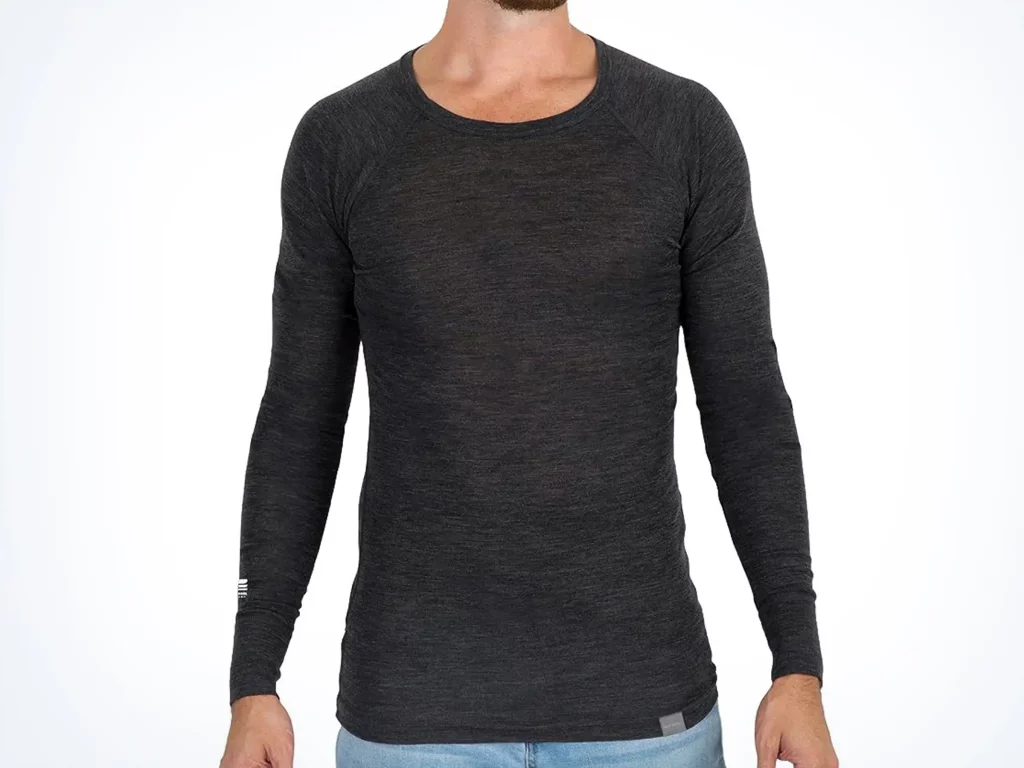
Middle Layer
The middle layer is your insulating layer. It traps heat to keep your body warm, which is especially critical in the harsh cold. Materials such as down, fleece, or synthetic insulation jacket are great choices for this layer. The insulating layer can be multiple garments, allowing you to add or remove pieces depending on the weather and your activity level.
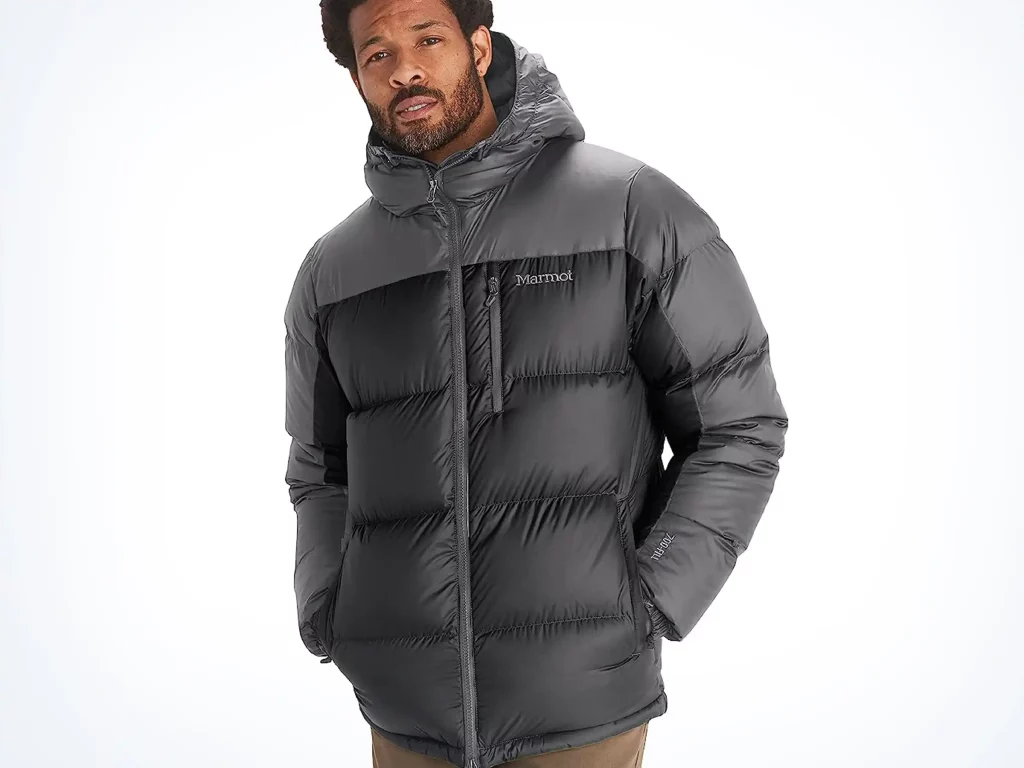
Outer Layer
The outer layer, also known as the shell layer, is your first line of defense against wind, rain, and snow. This layer should be both water-resistant and breathable. Look for garments that feature materials like GORE-TEX for maximum performance. Don’t forget to ensure that it’s large enough to fit comfortably over your base and middle layers without restricting movement.
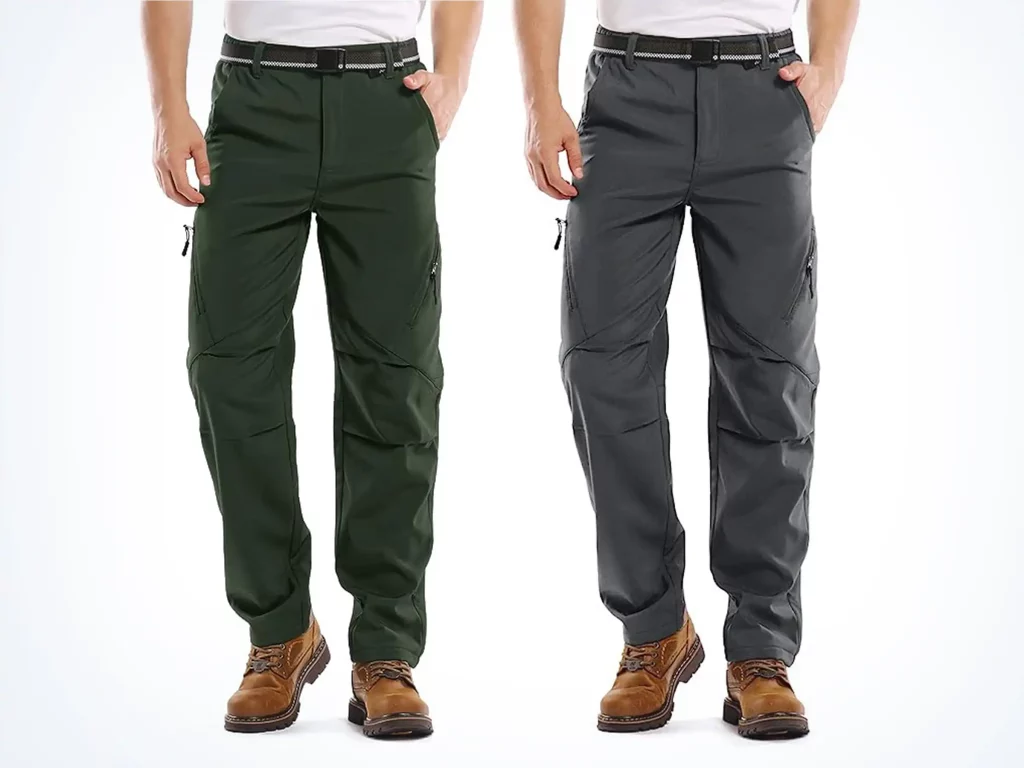
Footwear for Winter Camping
Your feet are your foundation and can quickly become cold if not properly protected. Choosing the right footwear can be crucial.
Winter Boots
Winter boots are vital for any winter camping trip. Look for boots that are waterproof, insulated, and offer high traction. These features will keep your feet warm, dry, and secure on icy or snowy ground. Make sure they’re also comfortable and well-fitted – remember, you’ll be wearing them for extended periods!
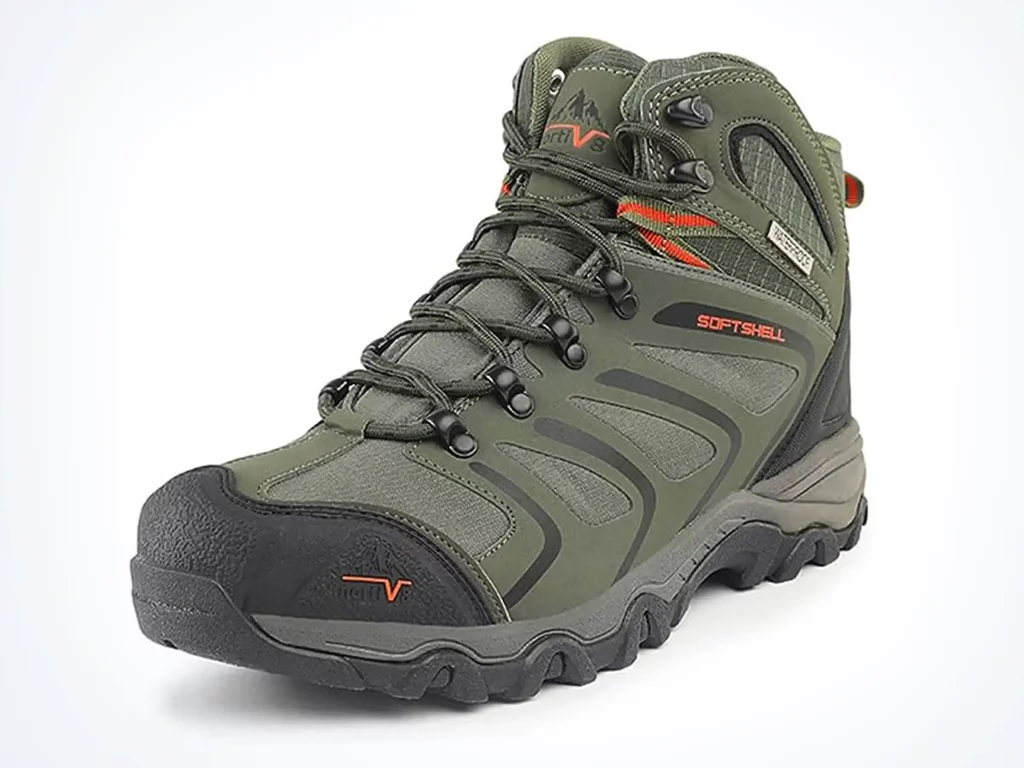
Snowshoes
If you’re planning to traverse snowy landscapes, snowshoes can be your best friend. These broad, flat devices distribute your weight over a larger area to keep you from sinking into the snow—a principle called flotation. Modern snowshoes are made of lightweight, durable materials and offer excellent traction. For winter camping, choose a pair designed for rolling or mountain terrain to handle various snow conditions and inclines.
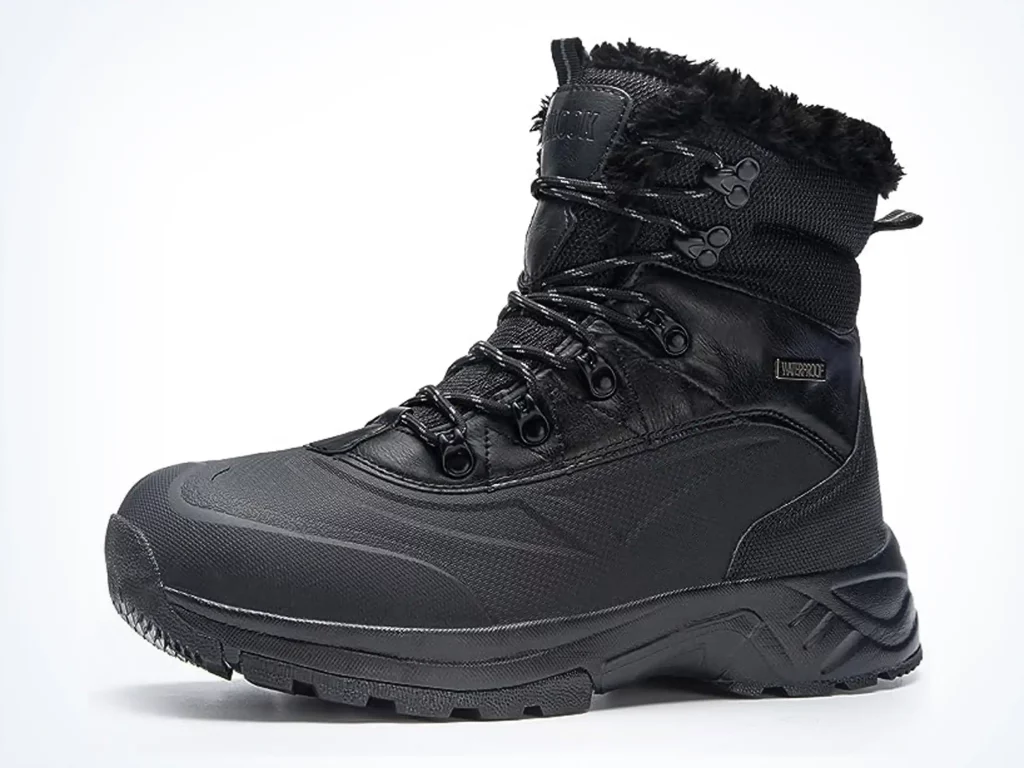
Wool Socks
The perfect companion to your winter boots is a good pair of wool socks. They are excellent at providing warmth and wicking moisture away from your skin. Unlike cotton, wool retains heat even when wet, reducing the risk of frostbite. Furthermore, wool socks come in various thicknesses, allowing you to adjust according to the weather and your activity level. Always carry a spare pair, as changing into dry socks can be a game-changer in cold conditions.
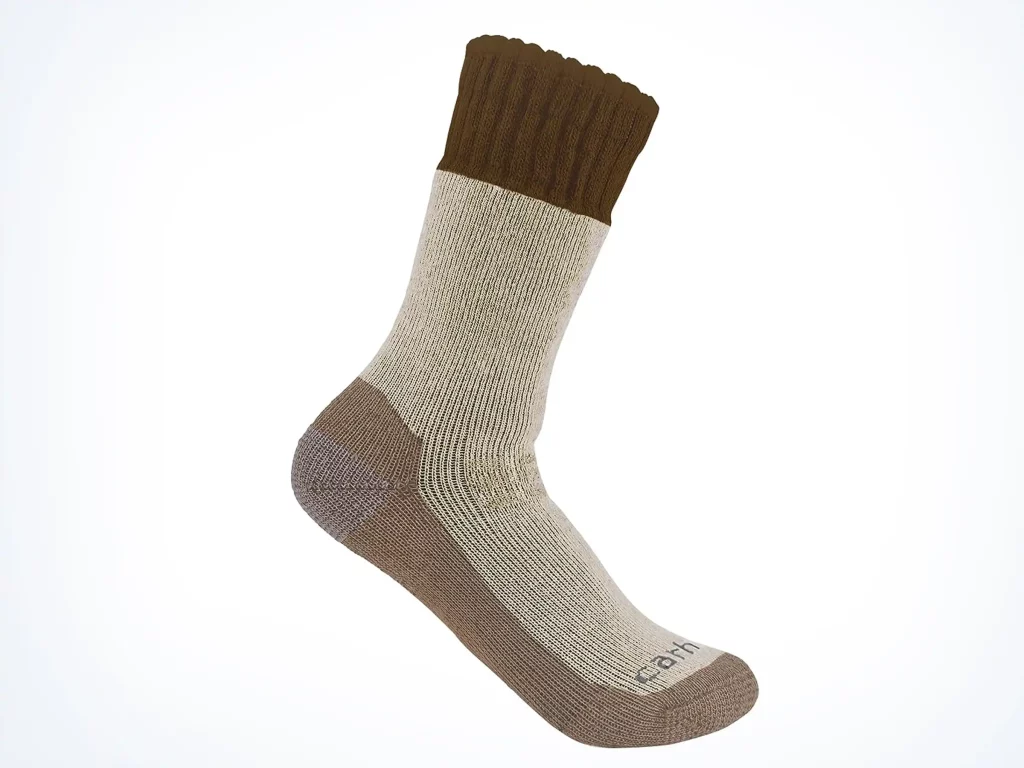
Accessories: Gloves, Hats, and Scarves
Accessories aren’t just fashion statements – in winter camping, they are crucial components of your gear. They provide the finishing touches of insulation, especially for areas like your hands, head, and neck, which can be vulnerable to cold.
Hand Gloves
Insulated gloves or mittens are a must-have for winter camping. They protect your hands from the cold and prevent frostbite, while allowing you to perform necessary tasks at the campsite. Look for gloves that are water-resistant and provide excellent insulation. Mittens, although they offer less dexterity, are warmer than gloves.
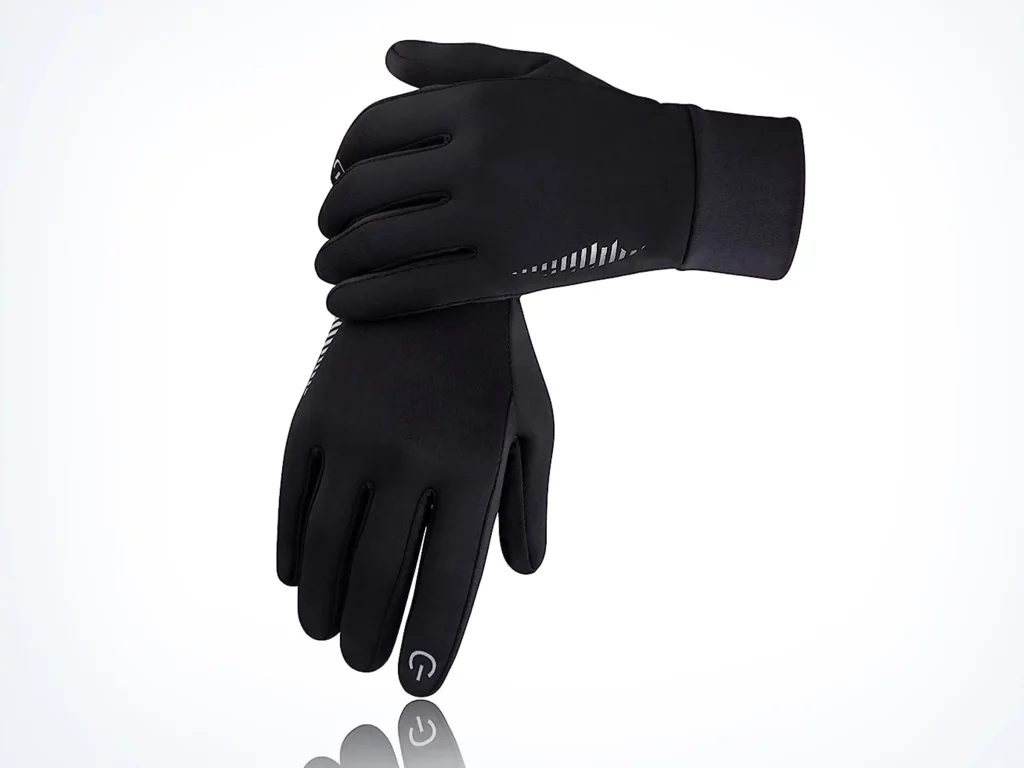
Winter Hats
A significant amount of your body heat escapes through your head. A well-insulated winter hat, also known as a beanie or a tuque, is vital to keep that heat trapped in. Look for one that covers your ears and is made of insulating material like wool or synthetic fibers. Some winter hats come with an additional fleece lining for extra warmth.

Scarves
A scarf may seem like an extra piece of gear, but it’s an effective tool in keeping you warm. A scarf protects your neck from cold winds and helps trap heat that might otherwise escape from the collar of your jacket. When choosing a scarf for winter camping, consider materials that offer good insulation, such as wool or fleece.
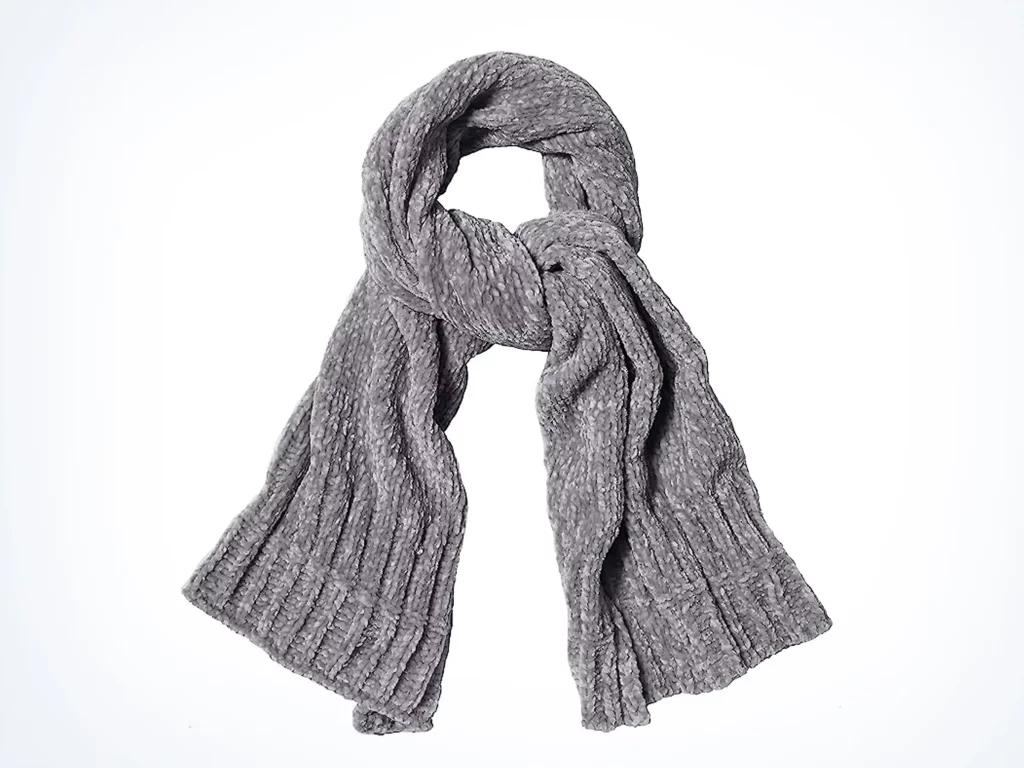
In essence, accessories can make a massive difference to your comfort and warmth during winter camping. Never underestimate their importance and ensure you pack them along with your other camping gear.
Food and Drink for Winter Camping
In the cold of winter, fueling your body correctly is crucial for both warmth and energy. The food and drink you choose can have a substantial impact on your body’s ability to withstand low temperatures and exertion.
Foods
Winter camping meals should be built around a balance of complex carbohydrates, fats, proteins, and of course, deliciousness. You burn more calories in cold weather, especially while hauling gear, so calorie-dense foods are a must. Here are some categories to keep in mind:
High Calorie Snacks
Calories are your body’s primary source of energy in cold temperatures. Pack high-calorie snacks such as nuts and dried fruits. These little powerhouses not only provide a quick energy boost but are also lightweight and easy to carry.

Complex Carbohydrates
Complex carbs, like oatmeal or whole-grain bread, provide a slow and steady energy release, ideal for activities like hiking. They are also rich in fiber, keeping you satiated longer, which can be essential when you’re miles from the nearest restaurant!

Protein
Don’t forget about protein. It’s crucial for muscle repair after strenuous activities. Consider bringing along protein bars or jerky. If you’re a fan of fishing, a freshly caught fish can serve as a great source of protein and a satisfying end to an adventurous day.
Fat
Fat is a high-energy food source that’s excellent for winter camping. Add olive oil to your meals or snack on avocados. These healthy fats will keep you warm and energetic during those chilly winter nights.
Ready-Made Meals
Pre-made camping meals can be a lifesaver. They’re lightweight, easy to pack, and require minimal preparation. Just add hot water and you’ve got a hearty meal ready in minutes. This can be especially handy when you’re exhausted from a day of exploring and just want a warm meal without much fuss.

Hot Foods
Nothing beats a hot meal or drink in the dead of winter. Pack a thermos of hot cocoa or prepare some soup. It’s not just about the nutrition here, but also the comfort that a hot food or drink can bring when you’re in the middle of a winter wonderland.
Drink
Just as important as food, staying properly hydrated is essential when camping in winter. Though you might not feel as thirsty due to the cold, your body can still become dehydrated in lower temperatures. Here’s how you can stay hydrated and warm.
Water
Water is life, especially when you’re exerting yourself in the great outdoors. Despite the cold, you’ll still be losing fluids through sweating and respiration, and it’s important to replenish. Aim for at least 2-3 liters per day, and remember, if you’re feeling thirsty, you’re already dehydrated.
Insulated Water Bottle
Having an insulated water bottle is a game-changer for winter camping. Not only will it stop your water from freezing in lower temperatures, but it can also keep your hot drinks warm. A good-quality, reliable insulated bottle is a worthy investment for any camping enthusiast.
Hot Drinks
Hot drinks can work wonders on a cold winter camping trip. They can provide instant warmth, hydration, and comfort. Consider packing tea, coffee, or hot chocolate in a thermos flask. Don’t underestimate the psychological boost that a warm drink can provide when you’re facing the chill of winter.
Staying hydrated is just as crucial in winter as it is in summer. So, remember to drink plenty of fluids. Just like the right foods, the right drinks can make all the difference in a successful winter camping trip.
Emergency Equipment for Winter Camping
When you venture into the great outdoors in the dead of winter, one truth is universally acknowledged: you must be prepared for the unexpected. Yes, winter camping can be a thrilling adventure, but it also comes with its fair share of risks. To stay safe, it’s crucial to pack the necessary emergency equipment. In this section, we’ll take a closer look at what you should include in your winter camping emergency kit.
First Aid Kit
First things first, a comprehensive first aid kit is an essential part of any camping trip. It should include bandages, antiseptic wipes, tweezers, medical tape, pain relievers, and any personal medication. Remember, accidents can happen, and the risk increases with the harshness of winter conditions. Therefore, having a first aid kit within easy reach could make all the difference.
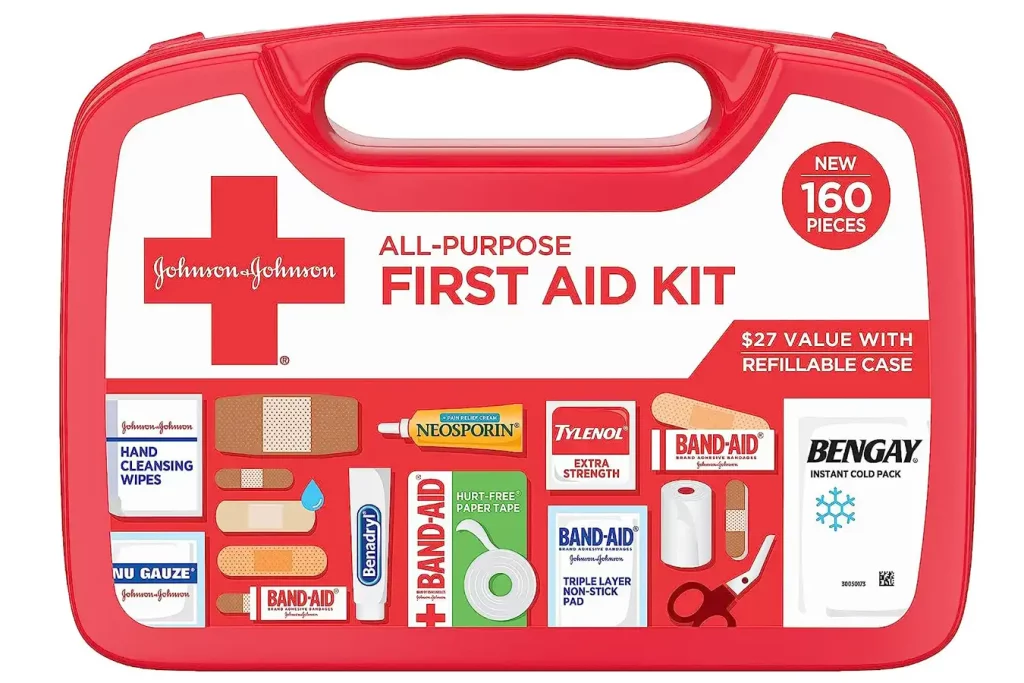
Emergency Whistle
An emergency whistle is a small, lightweight, yet potentially lifesaving tool. If you ever find yourself in a situation where you need help, blowing a whistle can be much more effective than shouting. The sound of a whistle can travel further and will last longer than your voice. It’s a simple tool, but in a pinch, it can be incredibly effective.
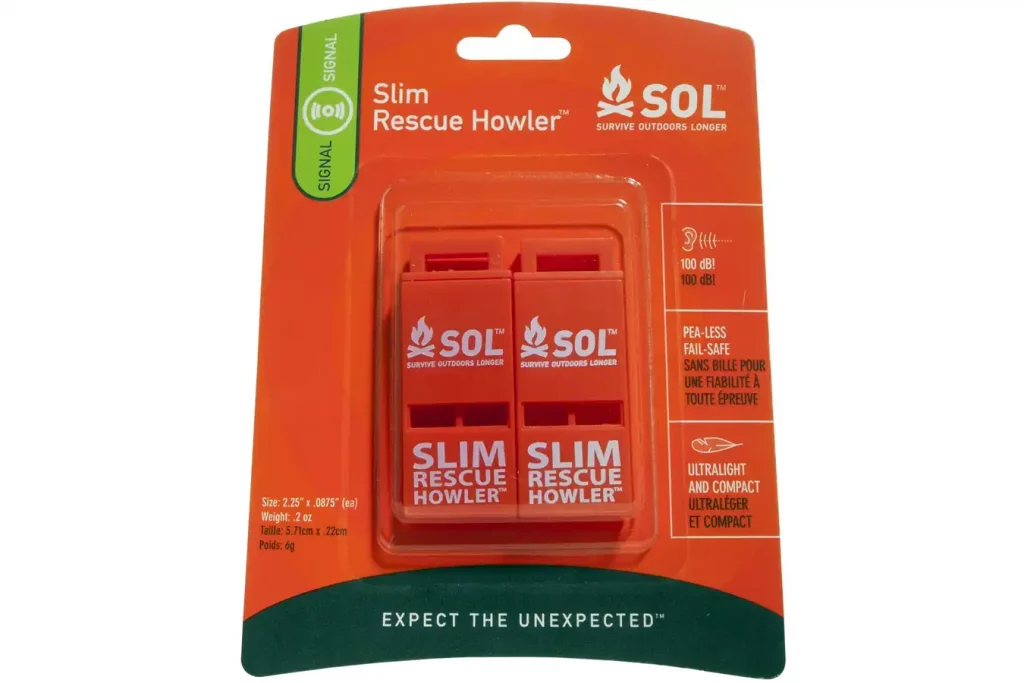
Hand and Foot Warmers
Winter camping means dealing with low temperatures. Hand and foot warmers can provide much-needed warmth in an emergency situation. These small, air-activated packs can offer heat for hours. You can place them in your gloves, boots, or pockets to help prevent frostbite.
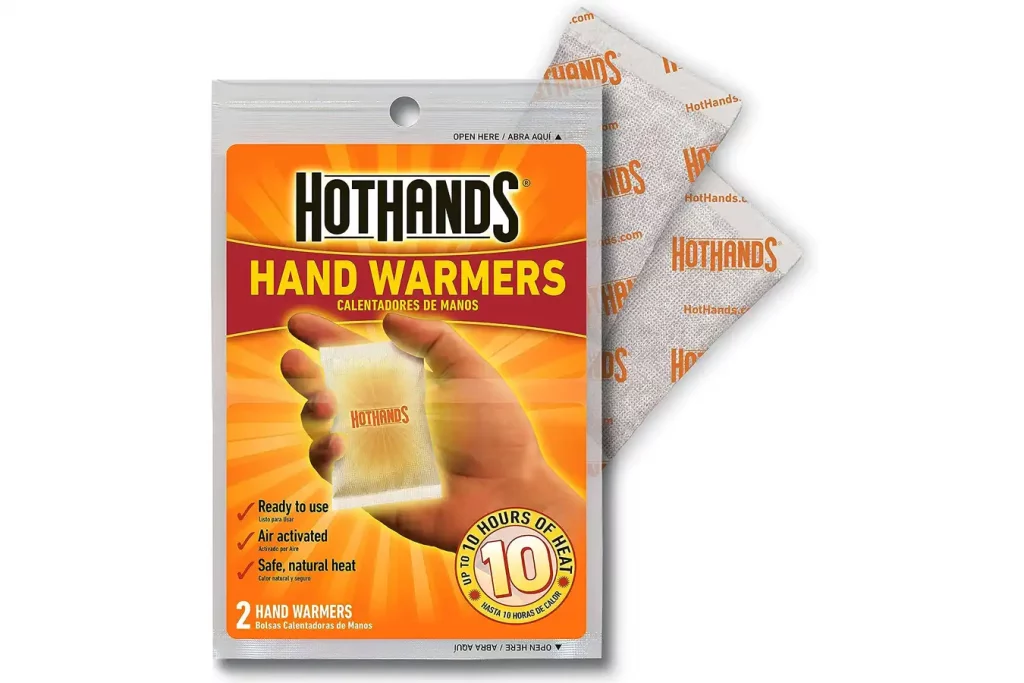
Food and Water
Even in an emergency situation, your body needs fuel to function. Packing extra, non-perishable food and water can be a lifesaver. Opt for high-energy foods like nuts, dried fruit, and energy bars. And remember, even in cold weather, staying hydrated is essential. Always have some backup water supply.
Fire Starting Kit
A fire starting kit is another essential for winter camping. It can provide warmth, a means to cook food, and a way to melt snow for drinking water. Include waterproof matches, a lighter, and some firestarter or tinder. This way, even if the weather is wet or snowy, you’ll have the tools to start a fire.
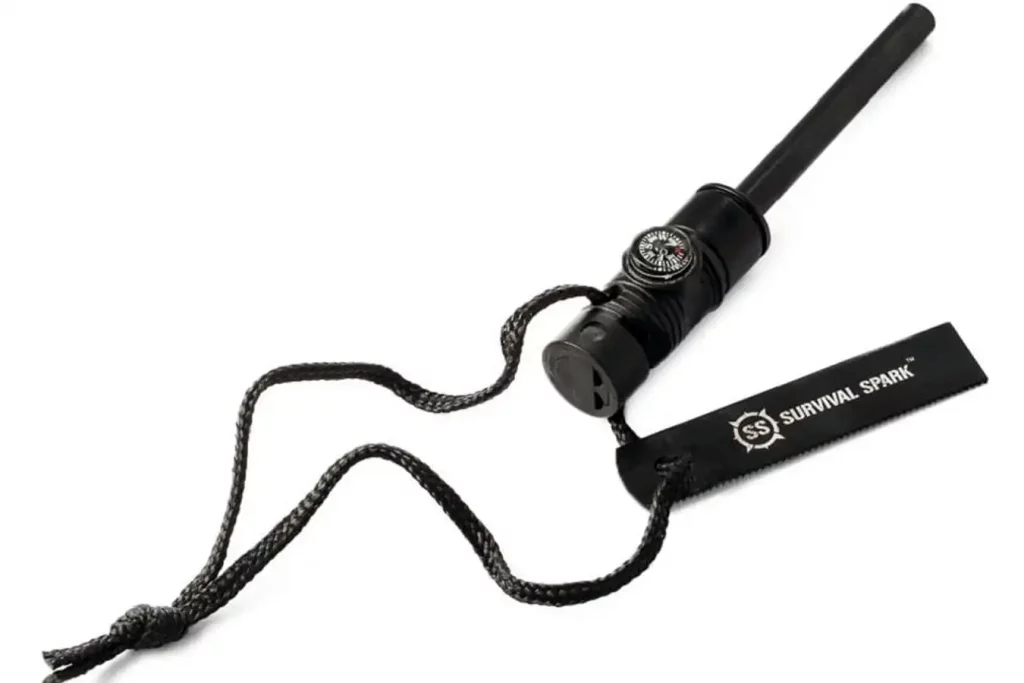
Preparing for the unexpected might seem overly cautious, but when it comes to winter camping, it’s better to be safe than sorry. These emergency equipment suggestions will help you prepare for your adventure and give you peace of mind knowing that you’re ready for whatever Mother Nature throws at you.
Winter Camping Safety
Winter camping can be a magical experience, but as with any outdoor activity, it’s not without its risks. Cold weather, snow, ice, and the potential for severe weather conditions can pose challenges. Not to mention, dealing with winter wildlife and navigating unfamiliar snowy terrain. Let’s explore some safety tips and best practices to make your winter camping trip as safe as it is enjoyable.
Navigating Through Snow and Ice
Traveling through snow and ice can be difficult and risky, particularly if you’re not familiar with the terrain or if conditions are extreme. Always have a reliable map and compass, and know how to use them. Use trekking poles for extra stability and wear ice grippers on your boots for added traction. And remember, moving slower in winter conditions is not a sign of weakness but a nod to safety.
Understanding Hypothermia and Frostbite
Hypothermia and frostbite are real risks when camping in cold weather. Hypothermia happens when your body loses heat faster than it can produce it. Symptoms can include shivering, exhaustion, confusion, and slurred speech.

Frostbite is when your skin and underlying tissues freeze. It most commonly affects extremities like your fingers and toes. Layering clothing, staying dry, and frequently checking for signs of frostbite can help prevent these conditions.
Avalanche Awareness and Safety
If you’re camping in mountainous regions during winter, you need to be aware of the potential for avalanches. Check the local avalanche forecast before your trip, understand the signs of avalanche terrain and know what to do if an avalanche occurs. Remember, safety should always come before adventure.
Wildlife Encounters
Cold weather doesn’t mean wildlife hibernates. Some animals, like bears and wolves, are active in winter. Research local wildlife and understand how to avoid attracting them to your campsite. Store food properly and maintain a safe distance if you encounter any animals.
Exercise and Activity
Winter camping involves more physical exertion than regular camping. Walking through snow, gathering firewood, setting up camp—all these require extra effort. Stay in good shape before your trip, pace yourself, and know your physical limits to prevent injury.
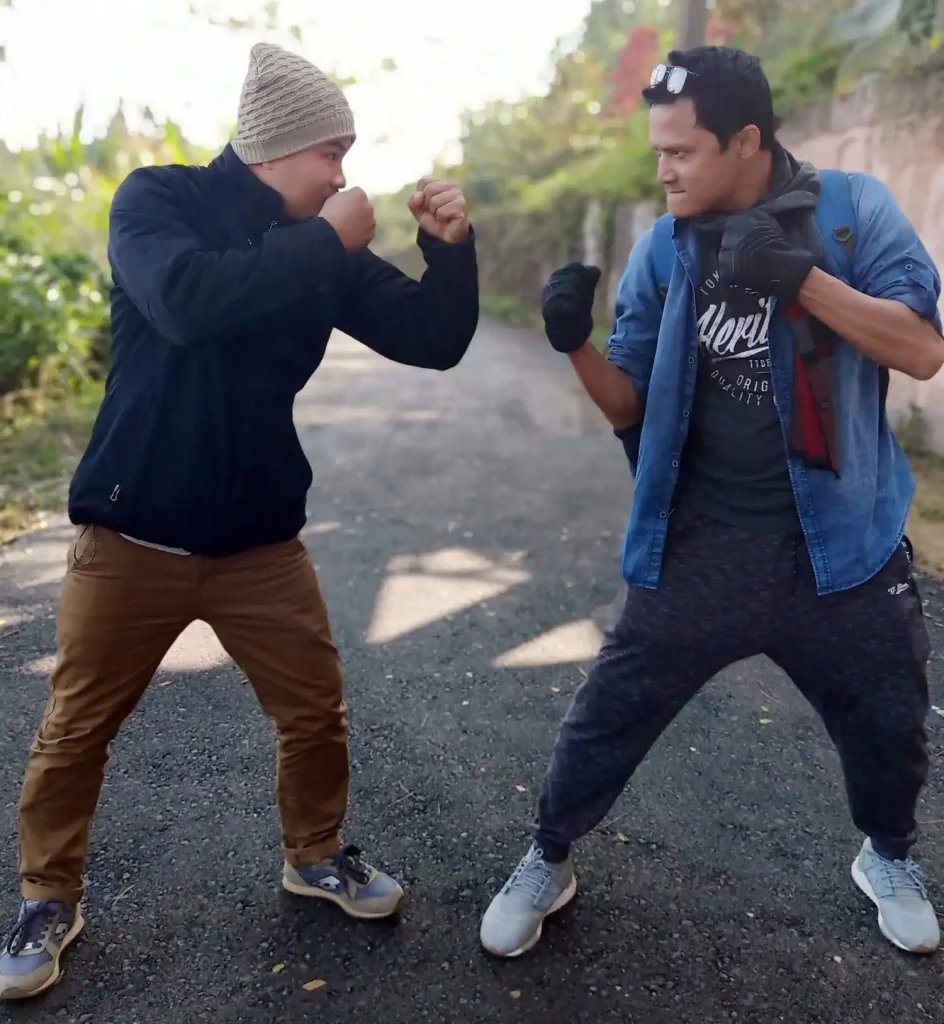
Winter camping safety might seem like a lot to consider, but don’t be discouraged. With proper planning, knowledge, and respect for nature, you can have a winter camping experience that’s memorable for all the right reasons. Remember, the goal is to return home with amazing stories, not frostbite.
Setting up a Winter Campsite
Winter camping offers a unique allure – the serenity of a snow-covered landscape, the thrill of braving the elements. But this tranquility can quickly morph into discomfort if your campsite isn’t set up properly. From finding the perfect spot to managing your food and water, let’s talk about how to create a safe and cozy winter home-away-from-home.
Choosing a Suitable Spot
Location, location, location! When setting up camp in winter, you’ll want to find a flat spot sheltered from wind and snow. Watch out for potential avalanche paths and falling ice or snow from trees overhead. Consider the direction of the sunrise – waking up with the sun can provide a much-needed morale boost on chilly winter mornings.
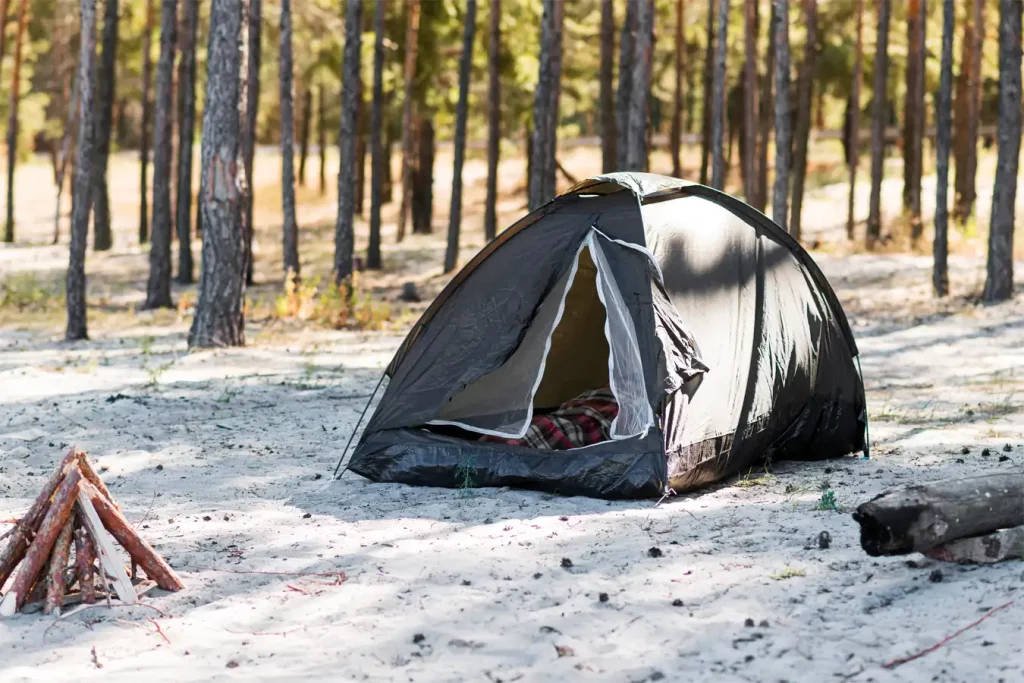
Setting up Tent/Shelter
In a winter environment, your shelter is your primary defense against the elements. Your tent should be sturdy, with strong poles and tight fabric. Set it up with the door facing away from prevailing winds and make sure it’s securely anchored to prevent it from turning into a giant snow kite.
Creating Snow Structures for Wind Protection
Snow might be cold, but it can also be an excellent insulator. Building snow walls around your tent can help reduce wind impact and keep your campsite warmer. Use a snow shovel and be patient—good walls take time to construct but can make a significant difference in your comfort level.
Campfire and Cooking Arrangements
Cooking is more challenging in winter camping due to the cold and potential wind. Locate your cooking area a safe distance from your tent to prevent any fire hazards. Protect your stove from the wind by using a windscreen and ensure you have plenty of fuel – cooking times can be longer in colder temperatures.
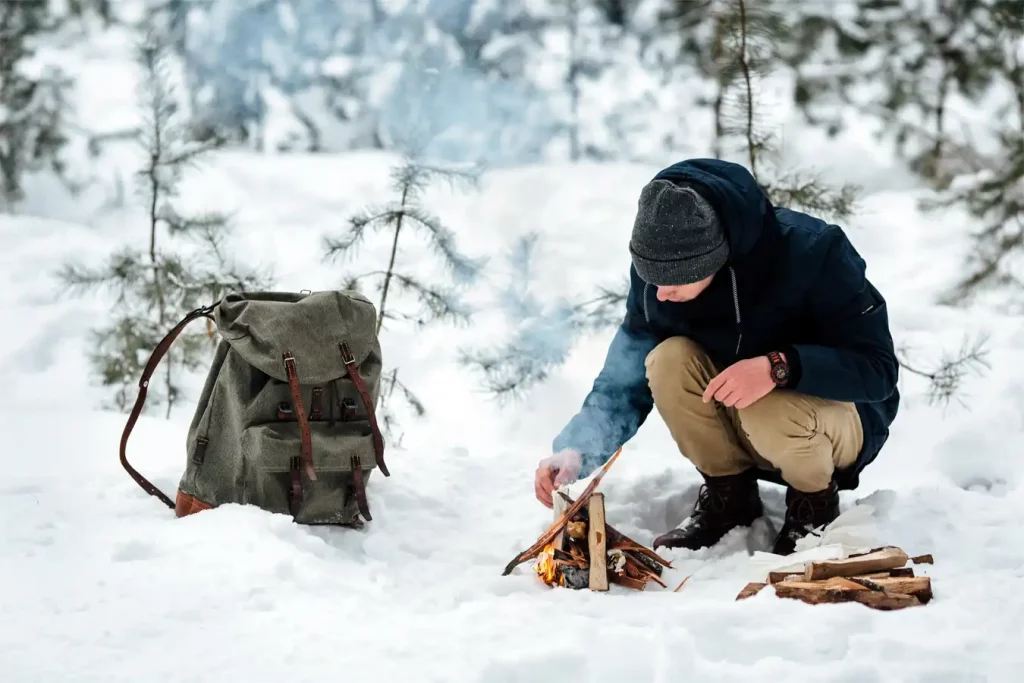
Food and Water Management in Cold Conditions
Keeping your food and water from freezing is crucial. Insulate your water bottles and keep them in your sleeping bag at night to prevent freezing. Pack your food in a bear-resistant container, even in winter, and keep it buried in the snow to maintain a refrigerator-like temperature.
Learn how to pack eggs for camping
Setting up a winter campsite requires a good amount of planning and effort, but the rewards are enormous. There’s something deeply satisfying about creating a comfortable and functional home in the heart of winter’s majesty. So plan well, stay safe, and enjoy the winter wonderland.
Enjoying Winter Camping
Winter camping can be a challenging pursuit, but it’s also full of joyful moments that make it all worthwhile. It’s not just about survival; it’s about truly experiencing and enjoying the winter wilderness in all its glory. From hiking through pristine snow to ice fishing on a frozen lake, there’s a world of winter activities to be discovered.
Winter Hiking
One of the most magical experiences winter camping offers is the opportunity to hike through a winter wonderland. The air is crisp and clear, and the landscape is transformed by a blanket of snow. It’s a whole new world compared to summer hiking. Just remember to wear layered clothing, sturdy winter boots, and bring along your trekking poles for better balance.
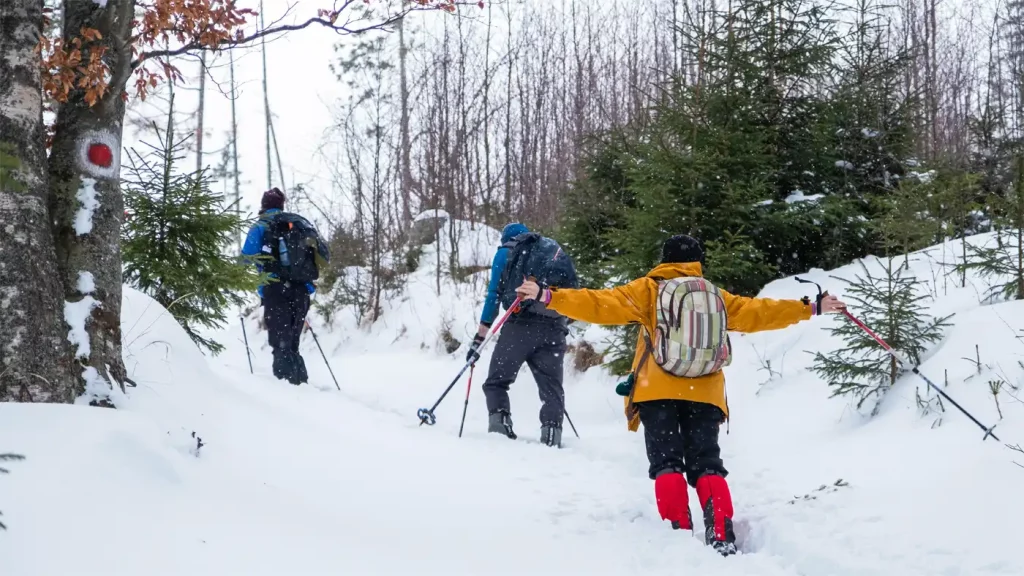
Snowshoeing
If the snow is deep, why not give snowshoeing a try? It’s a great way to traverse deep snow without sinking in, and it’s also an excellent workout. Snowshoeing is easy to learn and offers a unique perspective on the winter landscape. Plus, you can often find animal tracks in the snow, adding a bit of a safari feeling to your winter camping adventure.
Ice Fishing
Imagine sitting by a hole in the frozen surface of a lake, waiting for a fish to bite. Ice fishing is a time-honored winter tradition in many cultures and can add a new dimension to your winter camping experience. Just make sure the ice is thick enough before you venture out, and always follow local regulations.
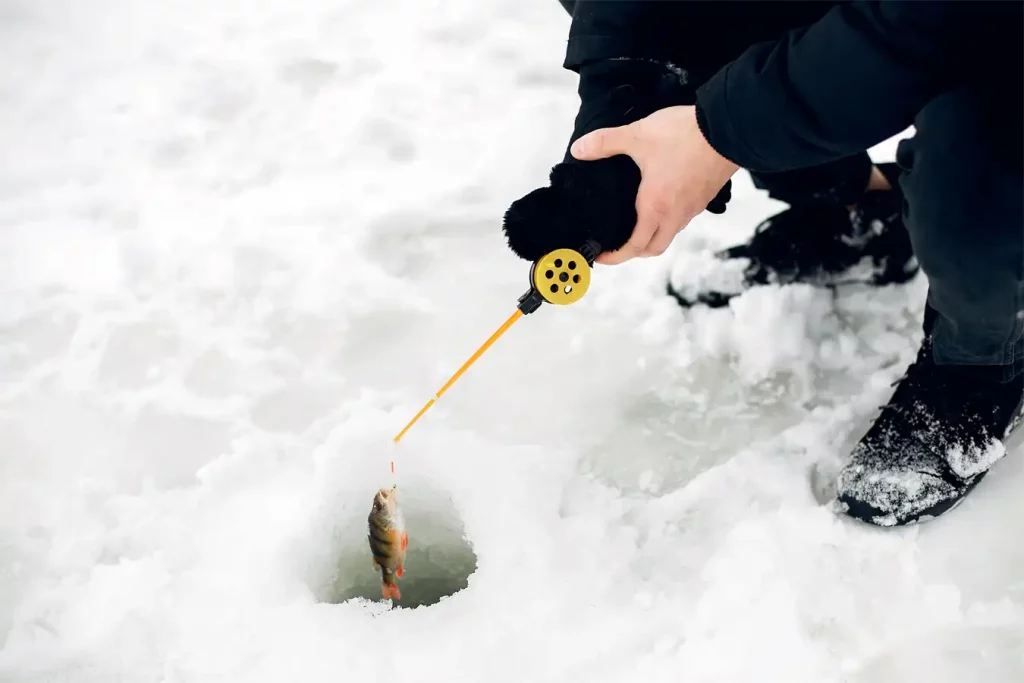
Photography
Winter’s light, combined with the stark beauty of the landscape, offers fantastic photography opportunities. The snow can create dramatic contrasts and highlight the beauty of the wilderness. So, whether you’re an experienced photographer or just like to snap pics on your phone, don’t forget to capture these beautiful moments.

Winter camping is about more than just enduring the cold. It’s a chance to experience nature in a unique way and engage in activities that you can’t do at any other time of the year. So put on your warmest gear, step out of your comfort zone, and let winter’s magic captivate you.
Winter Camping Etiquette
Embarking on a winter camping trip is not just about surviving the cold or having fun in the snow. It also requires a certain level of responsibility towards nature and fellow campers. Let’s take a closer look at some of the key principles of winter camping etiquette.
Leaving No Trace
The idea of “leave no trace” camping applies even more so in winter. The blanket of snow can easily hide any trash or disturbances, only for them to reappear once the snow melts. So, carry all your trash back with you, avoid cutting branches for firewood, and leave your campsite just as pristine as you found it. When spring comes, nature shouldn’t have any reminders of your winter visit.
Respect for Wildlife
Wild animals have a tough time in winter, with food resources scarce and the need to conserve energy paramount. Avoid disturbing wildlife by keeping a respectful distance, not feeding animals (which can harm their health and alter natural behaviors), and securing your food properly to not attract them to your campsite. Remember, you’re a visitor in their home.
Consideration for Other Campers
While winter camping may not be as popular as summer camping, you may still encounter other adventurous souls on your journey. Respect their camping experience by minimizing noise, keeping your pets under control, and maintaining a proper distance from their campsites. And who knows, a respectful approach might lead to shared stories and tips around a warm campfire.
By adhering to these principles, you not only ensure a positive winter camping experience for yourself and others, but you also help preserve the pristine beauty of nature for future generations of winter campers. It’s all about respect and understanding that nature is a shared resource, not an unlimited one.
Final Words
From understanding the unique challenges of winter camping to gearing up appropriately and practicing respect for nature, we’ve covered a lot of ground together. Whether you’re a seasoned camper or a newbie considering your first winter escapade, you’ve probably found some useful takeaways in this comprehensive guide.
In review, winter camping demands diligent preparation, from researching your trip to packing essential gear, proper clothing, and food choices. The importance of safety, whether in navigating snowy terrains or knowing how to respond to emergencies, cannot be overemphasized. And let’s not forget the respect for wildlife and fellow campers, an integral part of our outdoor etiquette.
To all first-time winter campers out there: embrace the challenge! Winter offers a unique palette of experiences you won’t find in any other season. There’s a particular kind of magic in watching snowflakes fall from a cozy tent or hearing the crunch of fresh snow under your boots. These are the moments you’ll carry with you, long after you’ve returned to the comfort of your home.
However, the art of winter camping isn’t learned overnight. Continue to build your knowledge, perhaps by participating in outdoor courses or joining a community of winter campers. The experience of others can be an invaluable resource and can help you avoid common mistakes.
Remember, the essence of winter camping lies not just in surviving the cold, but in celebrating it. So, bundle up, plan well, and open your heart to the wonders of a frosty landscape under the winter sky!

